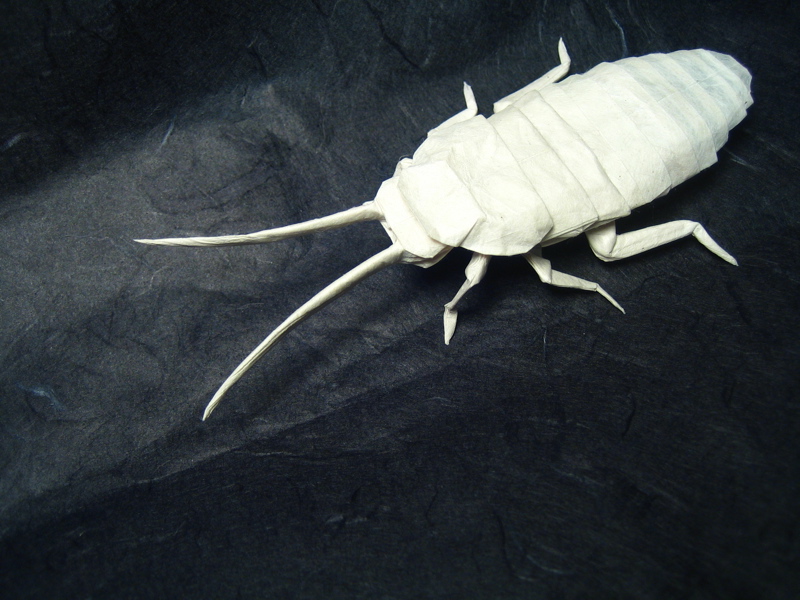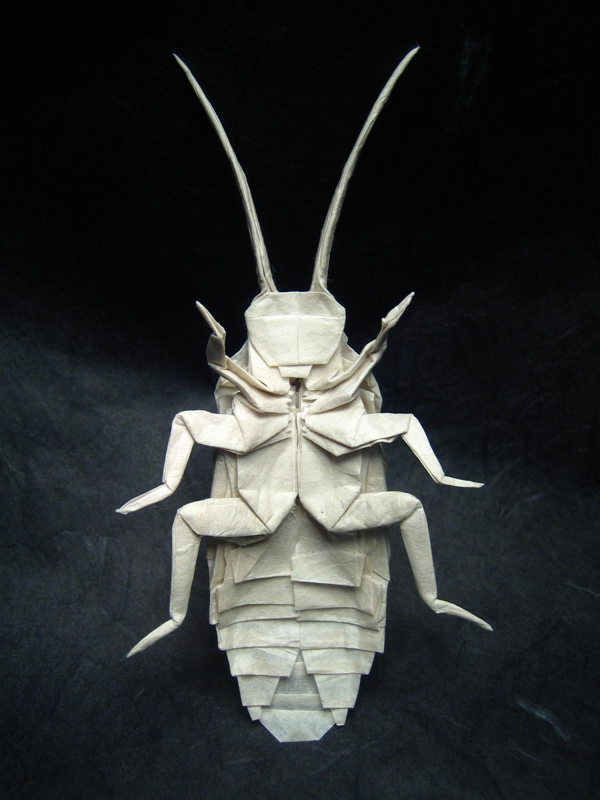I will be the first to admit that sometimes I just don’t understand what motivates woodworkers.
Recently, I had an opportunity to demonstrate the HP6v2 to a group of woodworkers and the ensuing discussion was centered on texture (one of my favorite design topics). I explained how it is the role of the designer to create depth and intrigue, in a non gratuitous manor, to add interest and richness to a piece when this little diddy popped out of the group;
“That plane is the dumbest thing I have ever seen.”
“Why?” I asked.
“All woodworkers want to do is make things flat.” was his reply.
Several others nodded their heads in agreement and I immediately felt the early pangs of a headache.
I have a hunch that in sheer numbers, he is likely correct. However, for those of you who are interested inspiring work, I am happy to share the genius of Brian Chan, a recent PhD graduate from MIT.
Brian’s art is origami and the rules are simple; the paper cannot be cut, glued or altered in any way other than folding. I found his work to be a rousing celebration of the human spirit and an exhilarating tour de force of texture. If you can spare 5 minutes, watch how Brian folded the MIT logo, Mens et Manus.
Below is Brian’s hissing roach–besides the mind-numbing difficulty, it is the texture that creates depth (through shadows) and that is what makes this interesting to our eyes.


Perhaps a few vectors can be bumped if one looked at that perfectly flat board as nothing more dramatic than a piece of paper…
–John
PS: Brian’s father is California woodworker/teacher Yeung Chan.
PPS: I think Brian should undertake the allghoi khorkhoi next, which everybody knows as the Mongolian Death Worm.

John,
I sent you an oragami of the “mongolian death worm” via Marissa. My son does origami and sent it to me…..
I got my plane – very cool – thanks for making great tools (again).
Will you be making more HP-6 soles soon? Also, special ordering replacement blades would be great! (just a suggestion).
John – you might point out to your planar friend that woodworkers might like to make things flat, but that they don’t have to be the same flatness everywhere. They can be locally flat, but have variations in the angle and size of the flat area over the expanse of the piece. The hissing cockroach is a good example of that. Over small regions it’s flat. But those locally flat areas abut other flat areas that are not co-planar. The lack of a global flatness creates visual interest. Indeed, it allows us to see patterns because of the way the light reflects off it (or not) that a single plane would not.
So sure – planes are good. But more planes might be better. It’s not just flatness. It’s what you do with flatness.
Don’t suppose you had a Mongolian Death Worm in your toolbox to accidentally drop down his shorts, did you?
– Peter
John,
If it helps any, I think the HP6 family of tools are my hands down favorite tools to use! I just used the .250 radius quarter round profile to “run” approx. 100 lineal feet of profile for my garage trim. I could have used the router table, but it’s noisy, dusty, and I just simply hate routers!
My guess is that this fellow probally thinks making plywood Santa cut-outs is fine woodworking! he also needs to use plans to make them, and he uses a broken jig saw he pulled out of the trash to “proudly” do it!
Here’s hoping for better audiences!
Rutager